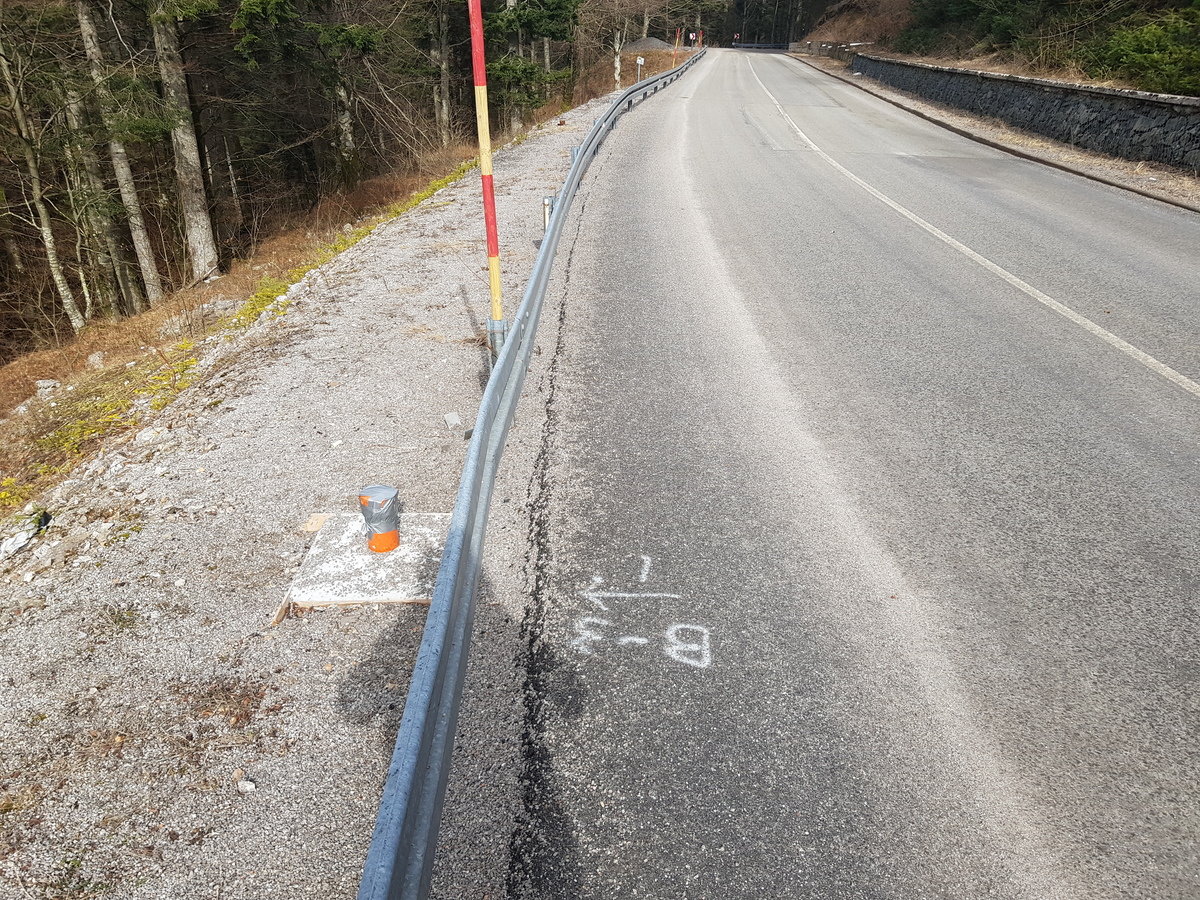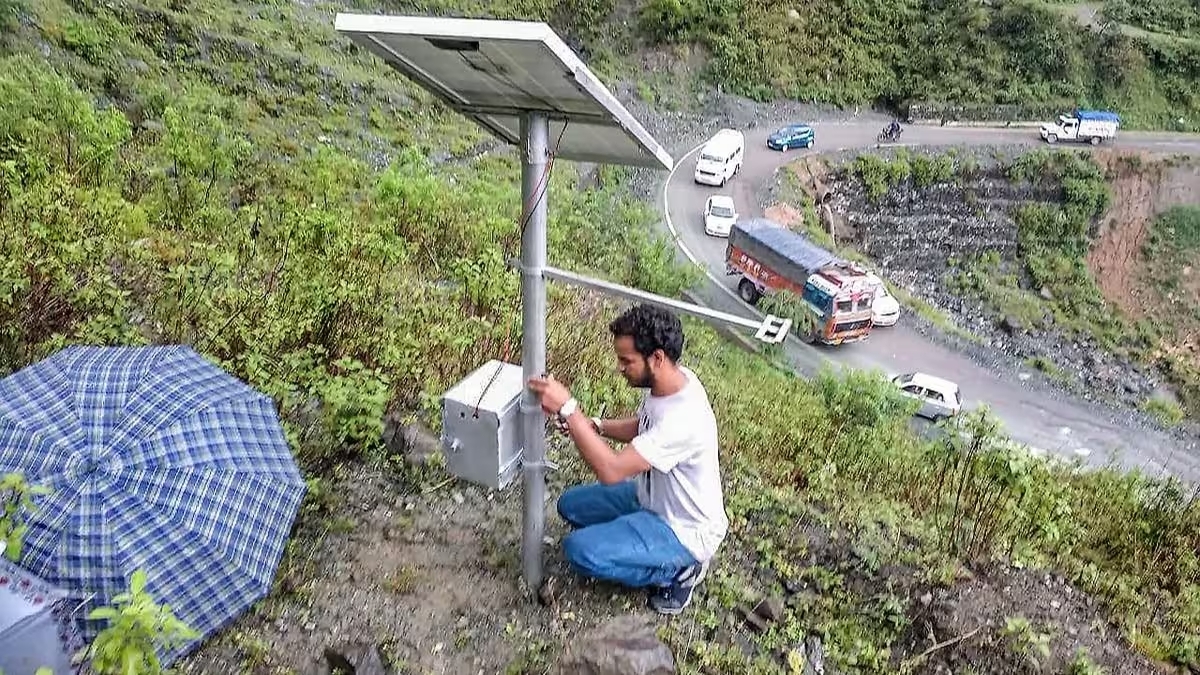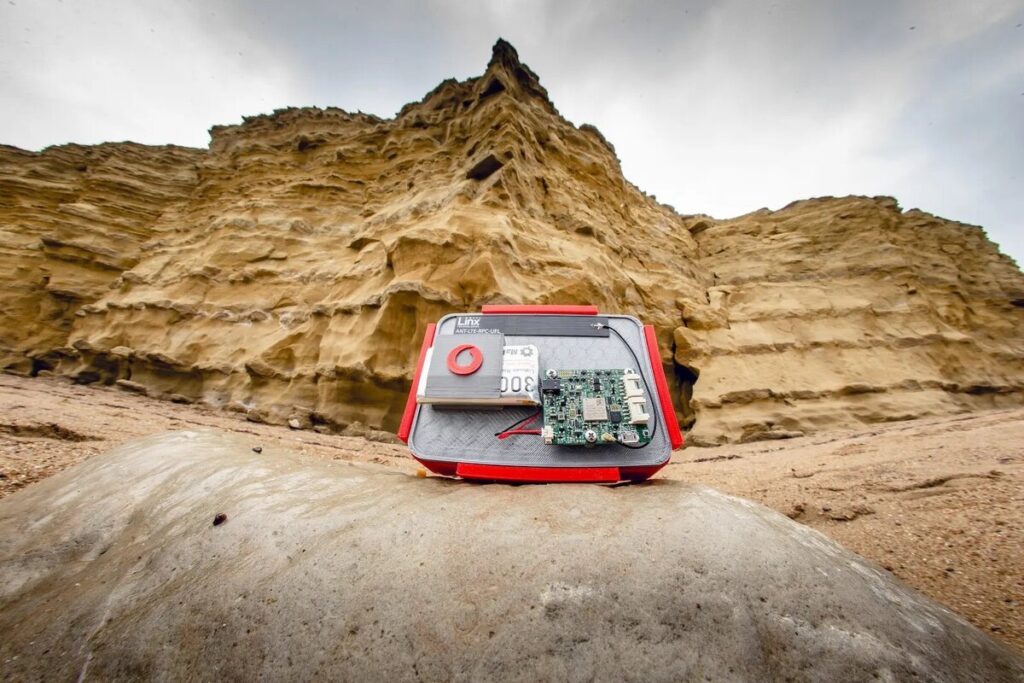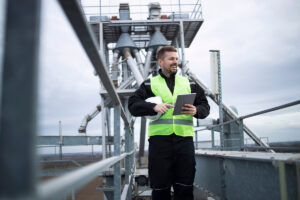Updated by Nazanin Ghodsian, 09/23/2024
One of the biggest geological hazards, landslides can have disastrous effects on ecosystems, infrastructure, and communities. The World Health Organization (WHO) estimates that landslides kill over 4,800 people worldwide each year and injure millions more while causing enormous financial losses and displacement. The frequency and intensity of extreme weather events, such as heavy rainfall, snowmelt, and droughts, are predicted to increase with the acceleration of climate change, hence increasing the risk of landslides.
Innovations in landslide sensors have emerged as a key component of contemporary risk management in response to these escalating difficulties. These cutting-edge sensors provide vital information on the stability of slopes and the behavior of possible landslides. They are outfitted with wireless communication, real-time monitoring capabilities, and autonomous operation. Landslide sensors are able to identify even the smallest changes in the ground, which allows them to alert at-risk communities in advance, allowing for prompt evacuations and lessening the loss of life and property damage.
Around the world, landslide sensors are being used to improve readiness. These sensors provide a constant stream of data that may be evaluated to predict landslide events. These variables include soil moisture, ground movement, and seismic activity. These technologies provide more accurate and efficient early warning systems, greatly enhancing response times and reducing casualties and damage, by combining data analytics and predictive modeling.
The most recent advancements in landslide sensors are examined in this article, including breakthroughs like data processing improvements, better integration with other monitoring systems, and shrinking. Stakeholders may safeguard lives, maintain infrastructure, and increase resilience in landslide-prone areas by strategically deploying these sensors.
Table of Contents
Understanding Landslides
Landslides are natural geological phenomena characterized by the downward movement of masses of rock, soil, or debris under the influence of gravity. They occur across various landscapes and are influenced by factors such as topography, geology, climate, and human activities. Understanding landslides is crucial for assessing associated risks, implementing preventive measures, and mitigating their impacts.
- Definition and Types: Landslides encompass a broad range of mass movements, including:
- Rockfalls: Sudden collapse or detachment of rocks from steep slopes.
- Rockslides: Rapid movement of large rock masses along inclined surfaces.
- Debris flows: Mixtures of soil, rock, water, and vegetation flowing downhill at high velocities.
- Mudflows: Fluid-like movements of saturated soil and debris, often triggered by heavy rainfall or rapid snowmelt.
- Earthflows: Slow, viscous movements of fine-grained soil and sediment, often resembling flowing mud.
- Slope failures: General term for various types of mass movements involving the collapse or failure of slopes.
- Causes and Triggering Factors: Landslides can be triggered by natural or anthropogenic factors, including:
- Heavy rainfall, snowmelt, or rapid thawing leading to increased pore water pressure and decreased slope stability.
- Seismic activity, such as earthquakes, which can destabilize slopes.
- Erosion due to river undercutting, coastal processes, or human activities like deforestation and construction.
- Volcanic eruptions, which can generate pyroclastic flows and lahars (volcanic mudflows).
- Changes in land use, such as urbanization or mining, altering the natural landscape and slope stability.
- Impacts: Landslides can have devastating consequences on human life, infrastructure, and the environment, including:
- Loss of life and injuries due to burial, trauma, or drowning.
- Destruction of buildings, roads, bridges, and other infrastructure.
- Displacement of communities and disruption of livelihoods.
- Damage to ecosystems, including deforestation, loss of habitat, and altered hydrological patterns.
- Economic losses resulting from cleanup and recovery efforts, as well as long-term impacts on local economies.
- Mitigation and Management: Effective management of landslide risks involves a combination of preventive measures, early warning systems, and post-event response strategies, such as:
- Land-use planning and zoning to restrict development in high-risk areas.
- Engineering solutions, such as retaining walls, slope stabilization measures, and drainage systems.
- Vegetation management to stabilize slopes and reduce erosion.
- Monitoring and early warning systems using technologies like landslide sensors, GPS, and remote sensing.
- Public awareness campaigns and community preparedness initiatives to educate people about landslide risks and safety measures.
Understanding landslides requires a multidisciplinary approach that integrates geological, hydrological, climatological, and socioeconomic factors. By studying the causes, triggers, and impacts of landslides, and implementing appropriate mitigation and management strategies, we can reduce the risks associated with these natural hazards and protect lives, property, and the environment.
Suggested article to read: Types of Sensors in Construction Industry; 2024 Review

The Need for Landslide Sensors
Landslides pose significant risks to communities, infrastructure, and the environment worldwide. The increasing frequency and intensity of extreme weather events, coupled with factors such as urbanization and deforestation, have heightened these risks. In light of these challenges, there is a critical need for advanced monitoring and early warning systems to mitigate the impacts of landslides. Landslide sensors play a pivotal role in addressing this need by providing real-time data and alerts for effective risk management. Several factors underscore the importance of landslide sensors:
- Early Detection and Warning: Landslide sensors enable the early detection of slope movements, allowing for timely warnings to be issued to at-risk communities. By detecting subtle changes in slope stability, these sensors provide valuable lead time for evacuation and emergency response efforts, reducing the likelihood of casualties and property damage.
- Remote Monitoring: Landslide sensors facilitate remote monitoring of hazardous areas, including inaccessible or remote locations. This capability is particularly valuable in regions prone to landslides where traditional monitoring methods may be impractical or costly. Remote monitoring enhances situational awareness and enables proactive measures to be taken to mitigate landslide risks.
- Data-driven Decision Making: Landslide sensors generate valuable data on slope conditions, including factors such as displacement, deformation, and groundwater levels. This data enables stakeholders, including government agencies, emergency responders, and infrastructure operators, to make informed decisions regarding land use planning, infrastructure design, and disaster preparedness measures.
- Enhanced Resilience: By providing early warning and monitoring capabilities, landslide sensors contribute to the resilience of communities and infrastructure systems. Proactive monitoring and risk management measures can help minimize the impacts of landslides, safeguarding lives, livelihoods, and critical infrastructure assets.
- Cost-effectiveness: While the initial investment in landslide sensor systems may seem significant, the long-term benefits outweigh the costs. By preventing or reducing the magnitude of landslide-related disasters, these sensors help avoid the substantial economic losses associated with property damage, infrastructure repair, and emergency response efforts.
- Research and Innovation: The deployment of landslide sensors fosters research and innovation in landslide monitoring technologies. Ongoing advancements in sensor technology, data analytics, and predictive modeling further enhance the effectiveness of landslide monitoring and early warning systems, driving continuous improvement in risk management practices.
Landslide sensors play a crucial role in mitigating the impacts of landslides by providing early detection, remote monitoring, and data-driven decision support. By investing in these technologies and integrating them into comprehensive risk management strategies, communities can enhance their resilience to landslide hazards and better protect lives and property.
Suggested article to read: Environmental Sensors; Comprehensive Guide 2024
Types of Landslide Sensors
Landslide sensors are specialized instruments designed to detect, monitor, and analyze various parameters associated with slope stability and movement. These sensors employ a range of technologies to gather data on factors such as displacement, deformation, groundwater levels, and environmental conditions. Understanding the different types of landslide sensors is essential for implementing effective monitoring and early warning systems. Here are several types of landslide sensors commonly used:
- Ground-Based Sensors:
- Tiltmeters: Tiltmeters measure changes in slope angle or inclination, providing data on ground deformation and movement. They are typically installed at multiple locations along a slope to monitor changes in tilt and detect potential landslide activity.
- Inclinometers: Inclinometers measure the angle of inclination or slope deflection at specific depths below the ground surface. They are commonly used in boreholes or inclinometer casings to monitor subsurface movements and assess slope stability.
- Strain Gauges: Strain gauges measure changes in strain or deformation in structural elements, such as soil nails, retaining walls, or rock bolts. They provide data on the mechanical behavior of materials subjected to stress, offering insights into slope stability and potential failure mechanisms.
- Remote Sensing Techniques:
- Global Navigation Satellite Systems (GNSS): GNSS technology, including GPS and GNSS receivers, enables the precise measurement of ground movement and displacement. By tracking changes in the positions of reference points or receivers, GNSS systems provide valuable data for monitoring landslide activity over large areas.
- Interferometric Synthetic Aperture Radar (InSAR): InSAR utilizes satellite-based radar imaging to detect ground surface deformation with millimeter-scale accuracy. By analyzing interferometric images acquired over time, InSAR can identify areas of subsidence or uplift associated with landslide movements.
- Geotechnical Instrumentation:
- Piezometers: Piezometers measure groundwater pressure or pore water pressure within soil or rock formations. Changes in pore water pressure can influence slope stability by reducing effective stress and increasing the risk of landslides. Piezometers are essential for monitoring groundwater levels and assessing potential triggers for slope failure.
- Seismic Sensors: Seismic sensors detect ground vibrations and seismic waves caused by landslides, earthquakes, or other sources of ground motion. Seismic monitoring can provide early warning of impending landslides and contribute to seismic hazard assessment and research.
- Environmental Monitoring Sensors:
- Rain Gauges: Rain gauges measure precipitation levels and intensity, providing data on rainfall patterns and storm events that can trigger landslides. Real-time monitoring of rainfall data is crucial for assessing landslide susceptibility and implementing early warning systems.
- Weather Stations: Weather stations measure various meteorological parameters, including temperature, humidity, wind speed, and atmospheric pressure. Environmental data collected by weather stations can help identify weather conditions conducive to landslide activity and inform risk assessment and decision-making processes.
By utilizing a combination of ground-based sensors, remote sensing techniques, geotechnical instrumentation, and environmental monitoring sensors, landslide monitoring systems can provide comprehensive data on slope stability and movement dynamics. Integrating these sensors into advanced monitoring networks enables proactive risk management and helps mitigate the impacts of landslides on communities, infrastructure, and the environment.
Suggested article to read: Building Sensors; Everything You Need to Know in 2024

Advancements in Landslide Sensor Technology
In recent years, significant advancements have been made in landslide sensor technology, driven by innovations in sensor design, data analytics, and communication systems. These advancements have enhanced the accuracy, reliability, and efficiency of landslide monitoring and early warning systems, enabling more proactive risk management strategies. Several key advancements in landslide sensor technology include:
- Miniaturization and Integration:
- Miniaturization of sensor components has led to the development of compact and lightweight landslide sensors that can be easily deployed in rugged terrain or inaccessible areas.
- Integration of multiple sensors into a single monitoring device allows for comprehensive data collection, including measurements of displacement, deformation, groundwater levels, and environmental conditions.
- Wireless and Remote Monitoring:
- Wireless communication technologies, such as Wi-Fi, cellular networks, and satellite communication, enable real-time data transmission from remote sensor locations to centralized monitoring stations.
- Remote monitoring capabilities allow for continuous surveillance of landslide-prone areas without the need for physical access, enhancing safety and reducing maintenance costs.
- Autonomous and Self-Powered Sensors:
- Advances in energy harvesting and power management technologies have enabled the development of autonomous landslide sensors that operate independently for extended periods without external power sources.
- Self-powered sensors, utilizing renewable energy sources such as solar or kinetic energy, eliminate the need for battery replacement and ensure continuous operation in remote or off-grid locations.
- Sensor Fusion and Data Integration:
- Sensor fusion techniques combine data from multiple sensors to provide more comprehensive insights into slope dynamics and landslide behavior.
- Integration of landslide sensor data with other geospatial data sources, such as satellite imagery, GIS databases, and weather forecasts, enhances the accuracy and reliability of landslide hazard assessments.
- Real-time Monitoring and Early Warning Systems:
- Advanced data processing algorithms enable real-time analysis of landslide sensor data, allowing for the rapid detection of slope movements and the timely issuance of warnings to at-risk communities.
- Machine learning and artificial intelligence techniques facilitate the development of predictive models that can forecast landslide events based on historical data and real-time sensor observations.
- Cost-effective and Scalable Solutions:
- Innovations in sensor manufacturing processes and materials have reduced production costs, making landslide sensors more affordable and accessible to a wider range of users.
- Scalable sensor network architectures allow for the deployment of large-scale monitoring systems covering extensive geographic areas, thereby maximizing coverage and effectiveness in landslide risk management.
Advancements in landslide sensor technology have revolutionized the way landslides are monitored, analyzed, and managed. By leveraging miniaturization, wireless communication, autonomy, sensor fusion, real-time monitoring, and cost-effective solutions, modern landslide sensors offer unprecedented capabilities for mitigating the impacts of landslides and enhancing the resilience of communities and infrastructure against these natural hazards. Continued research and innovation in landslide sensor technology will further improve our ability to monitor and mitigate landslide risks in the future.
Conclusion
In conclusion, the evolution of landslide sensor technology represents a significant leap forward in our ability to understand, monitor, and manage landslide hazards effectively. Through miniaturization, integration, and wireless communication, these sensors offer enhanced portability and accessibility, enabling real-time monitoring even in remote or challenging terrain. Autonomous and self-powered sensors ensure continuous operation, while advanced data analytics and sensor fusion techniques provide comprehensive insights into slope dynamics and landslide behavior.
The development of cost-effective and scalable solutions has democratized access to landslide sensor technology, empowering communities and organizations to implement proactive risk management strategies. Real-time monitoring and early warning systems offer invaluable lead time for evacuation and emergency response efforts, ultimately saving lives and minimizing property damage.
As we continue to advance in landslide sensor technology, leveraging innovations in machine learning, artificial intelligence, and predictive modeling, we move closer to a future where the impacts of landslides can be anticipated and mitigated with precision. By investing in research, innovation, and collaborative efforts, we can harness the full potential of landslide sensors to build safer, more resilient communities in the face of natural hazards.
FAQs
What are the Main Types of Landslides and how do they Differ?
- Answer: Rockfalls, which are sudden collapses of rocks, rockslides, which are rapid movements of rock masses, debris flows, which are downhill movements of a mixture of soil, rocks, and water, and mudflows, which are fluid-like movements of wet soil, are some of the several types of landslides. The speed, substance used, and cause of each kind differ.
What Triggers Landslides, and how can they be Predicted?
- Answer: Strong rains, quick snowmelt, earthquakes, volcanic eruptions, and human activity (such as construction or deforestation) can all cause landslides. Utilizing sophisticated sensors, landslide prediction entails tracking rainfall, groundwater levels, slope stability, and seismic activity.
How do Landslide Sensors Help in Early Warning and Prevention?
- Answer: Landslide sensors provide early warnings before to a landslide by detecting minute slope movements and surrounding variables. This lowers the risk of life and property by enabling prompt evacuation and mitigation measures.
What are some of the Modern Technologies Used for Landslide Monitoring?
- Answer: Technologies that monitor slope stability and triggers include remote sensing instruments like GNSS and InSAR, environmental sensors like rain gauges and weather stations, and ground-based sensors like tiltmeters and inclinometers.
How can Communities Mitigate Landslide Risks?
- Answer: Planning land use to minimize high-risk regions, putting in place engineering solutions like drainage systems and retaining walls, stabilizing slopes with vegetation, and putting in early warning systems that use sensor data to alert decision-makers are all examples of mitigation.
Suggested article for reading:
Sustainable Construction Technology; Ultimate Guide in 2024
The Future of Smart Construction; 2024 Review
The Ultimate Guide to IoT Sensors in Construction (2024)
The Role of Digital Transformation in Sustainable Future; 2024 Review
5 Types of Wireless Alarm Button in Construction Site; 2024 Review
Theft in Construction Statistics & How to Avoid it; 2024 Review
Resources:
Althen Sensors & Controls | Advanced Sensors | Sensor Partners | Off Shores | Offshore Technology
For all the pictures: India Today | GeoTech Rijeka | Telecoms Tech News





